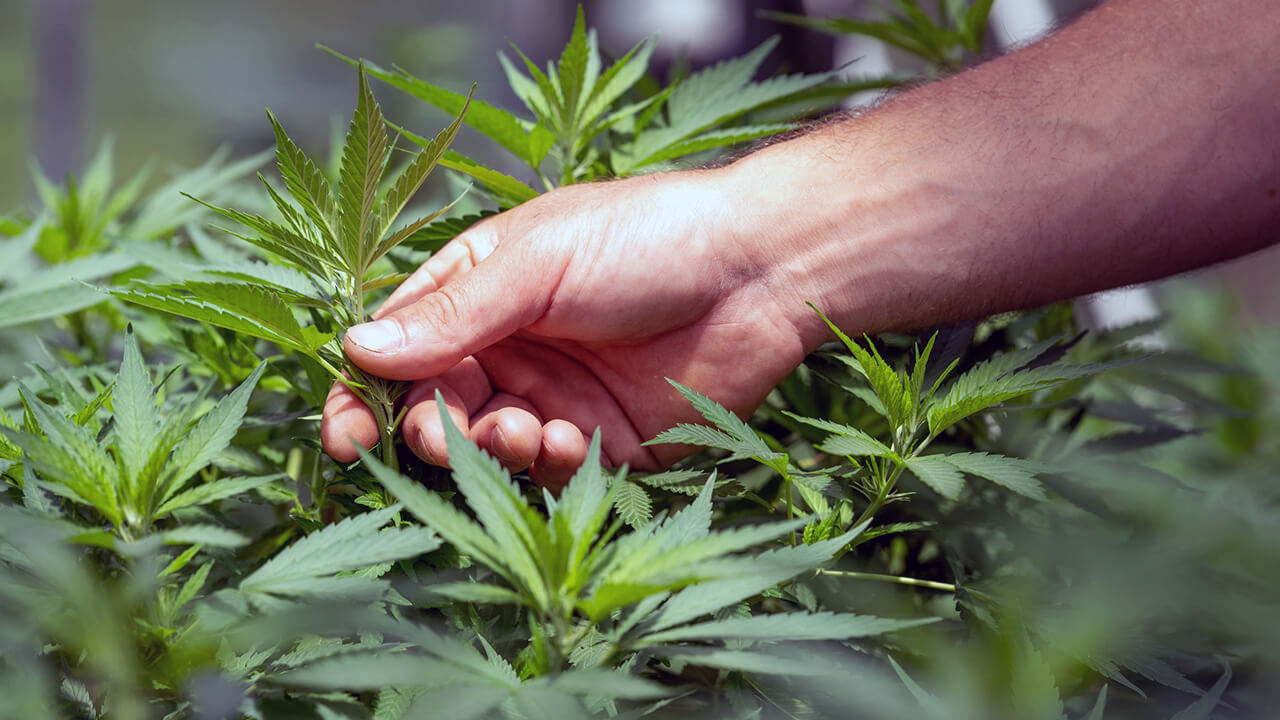Plenty has been written about the marketing strategies you should follow for this or that business type, and so cannabis marketing strategies really shouldn’t be any different, right?
Unfortunately, that isn’t the case. Marketing cannabis is not like marketing a law firm or furniture products. Cannabis is different, because of regulation by local and federal government, and the subsequent restrictions of cannabis advertising by platforms such as Google and Facebook.
So building a digital brand in cannabis can be more difficult — but it’s not impossible. You just have to know the tricks, the ins and outs of doing it all correctly and in a way that won’t get you flagged, rejected, or fined. You have to be careful ignoring the noise and truly understanding ROI.
Keep in mind that no two cannabis brands are the same. That means no two cannabis marketing strategies will be the same.
However, there are still some general guidelines that any brand can follow when designing marketing strategies for themselves. And this is the space in which we live at Heady, where we offer a range of cannabis marketing services.
So, without further delay, here it is: your guide to designing cannabis marketing strategies that can work toward your business growth.
Why Marketing Cannabis Is Different
We mentioned it briefly above: marketing cannabis is different.
It isn’t the same as marketing office supplies, cell phones, or SUVs.
The big reason is that cannabis remains illegal at the federal level in the United States. However, the issue of determining U.S. cannabis legality at the local level falls to state & local governments.

So while some states are more liberal than others on the issue of medical and recreational cannabis, the federal classification of cannabis as a Schedule I drug makes many marketing platforms edgy about allowing cannabis to be shown there.
As a result, many popular marketing platforms have heavily restricted or outright banned cannabis advertising, and even hemp-derived products.
This is the problem brands have with developing cannabis marketing strategies; several of the traditional marketing methods, namely advertising on Google and social media, are not fully available to them.
The question remains, then: how do cannabis brands advertise?
Despite the rules and regulations around cannabis advertising and marketing in the United States, cannabis brands can indeed market themselves effectively using digital marketing.
From social media posts to SEO to paid media marketing, the Internet offers many ways to get the cannabis word out there.
SEO remains an effective approach and certainly has its place, but if you’re an e-commerce dispensary that just wants to get its products in front of the right eyes quickly and efficiently using PPC, you can’t just hop on Google Ads and set up a campaign around “buy edibles now.”
You also can’t go on to write ad copy saying “Get discount edibles now through Sunday. Discover the healing power of cannabis today!”
Having said all of this, though, there are still effective digital marketing strategies you can create to get your products out to the public.
Top 5 Cannabis Marketing Strategies
At Heady, we are ready to sit down and collaborate with you on any of the strategies that follow. For now, let’s lay them all out so you know what you’re dealing with.
SEO
SEO isn’t easy, relatively speaking, but it’s one of the easier methods on this list because brands are almost completely unrestricted in the methods they can take to optimize pages or write about cannabis.
In that sense, cannabis SEO is really not unlike SEO in any other industry.
If you’re a cannabis retailer (dispensary, delivery service), you really need to be focused on local SEO.
What does that involve? Here are some of the most important points:
- Using local keywords on your homepage and category pages, such as “dispensary near me” or “Denver concentrates “or “Toronto edibles” so you can rank when people search these terms
- Optimize your Google My Business profile. Ensure you call yourself a “dispensary,” and always answer customer questions that come in
- Make sure that your business listings on other websites always display consistent information, such as your business name, address, phone number, and website
- Your website should be optimized for users and Google crawlers, with product-detail pages being optimized with keyword-rich content, folder structures being logical, and meta data making good use of keywords
- Solicit reviews and testimonials from customers, particularly on websites that bring in some of your business (e.g. Jane, Weedmaps)
No matter what type of cannabis business you operate, you will want to have content that is topically relevant, to help your website rank for search keywords that are important to you. At a minimum, assign each keyword to a page type based on its search intent, and create pages around those keywords.
Those pages could be service pages, menu pages, your homepage, or blog posts. Whatever they are, you’d use those same keywords to optimize the title tag and meta description for each page.
The content portion of your SEO strategy should be designed to capture site visitors and nurture them down the sales funnel toward conversions.
This is typically done through a combination of top-of-funnel awareness posts about your cannabis offerings, middle-funnel commercial posts about which products are right for people, and bottom-funnel transactional posts, such as customer testimonials, designed to promote conversions.
Whenever you are creating content for cannabis, keep in mind the big restriction that can get you in big trouble: you can’t make any definitive medical claims about what cannabis or a particular cannabis product does for human health.
If you do, you are opening yourself to vulnerability, as the Federal Trade Commission could fine your business for violating its laws about unsubstantiated medical claims.

Paid Media
We went through a perfect scenario above of a cannabis brand advertising itself using PPC, using real, cannabis-themed keywords and copy.
That’s the ideal world, though. Cannabis PPC in the world we live in today is a bit more complicated.
Google, the primary platform where you would be doing PPC, considers cannabis as a recreational drug and bans it from its ad network.
That’s the official word.
However, and we have written about this elsewhere on our blog, there is a way to get around that rule.
You indirectly bid on cannabis keywords via Google Ads, say, “dispensary near me.” You then write completely generic ad copy, something like, “Discover the highest-quality products now.”
To repeat: you bid on cannabis keywords that you do not actually use in your ads.
The ad links to a landing page that also doesn’t mention cannabis, but maybe the page encourages visitors to sign up for an email list.
Once on that list, users can receive real marketing from you about your cannabis products. But nowhere in the ad or on the landing page should cannabis be mentioned.
That’s a cannabis marketing strategy that can get you around Google. It isn’t what many brands would call perfect, but some brands have found success with it, and so we do help our clients with this here at Heady.
Social Media
Here’s another question we are asked frequently:
Can you advertise cannabis on social media?
Officially, the primary social media platforms such as Facebook and Instagram prohibit the advertisement of cannabis products and even the mentioning of cannabis or any of its synonyms.
However, there is a gray area, a workaround, that cannabis brands can employ to advertise on social media. It involves building audiences from your own 1st party data, creating look-a-like audiences, and then building clean ad copy and landing pages.
Focus your ad copy on your brand only, and then let wise users click through to an email signup on your landing page to start getting marketing about your actual cannabis products.
The main social media platforms where people would want to advertise are Facebook and Instagram.
The unfortunate reality there is that Facebook is more or less the same as Google when it comes to marketing cannabis.
Facebook does, however, allow ads for non-ingestible hemp, but the ads can’t show the products themselves.
It might end up seeming safer to you to treat the Facebook Ads platform just like Google Ads, where you as an advertiser make no mention of anything to do with cannabis, but rather, focus on yourself as a brand.
Email is a marketing channel that remains a no-brainer for virtually every cannabis brand: retail, wholesale, even technology companies.
Email allows you to communicate directly with your customers, and keep them in the loop on anything relevant to your brand..
If you’re involved in cannabis retail sales (as a dispensary, delivery, or as a product/brand), having a strong CRM & Email strategy to grow your list can be a major asset. Your partners on the other side of the shelf (i.e. retailers if you’re a wholesale brand, wholesale brands if you’re a retailer) will place a lot of value in your ability to engage your own following and drive more awareness along with any co-marketing efforts.
The one big letdown of email is that, like Google and Facebook, some mainstream email service providers refuse to work with cannabis brands because cannabis is still illegal according to the federal government. Make sure you’re using a platform that is friendly to cannabis (industry platforms like Alpine IQ, or ESPs like Klaviyo & Mailerlite. Stay away from Mailchimp.
If email is your game, Heady will strategize with you on the best marketing approaches for grabbing people’s attention and holding it all the way down the funnel to conversion.
SMS Marketing
The final cannabis marketing strategy we want to discuss here is SMS marketing.
Just like email, SMS is useful because it’s a way to communicate directly with customers without being beholden to regulations like Google and Facebook have.
The big issue with SMS cannabis marketing is staying compliant with federal anti-spam laws and use of cannabis-related keywords.
It’s required that you acquire permission from people to send them text messages and include one and even two opt-out options for users when you market to them through SMS.
You also must avoid any cannabis-related keywords when you market through text messages. Once again, it’s just safer that way and makes it more likely that your campaign can continue.
Let Heady Help You Devise Your Perfect Cannabis Marketing Strategies
Any or all of these strategies could work for your cannabis brand. It comes down to your business type and what you want to accomplish.
At Heady, we’re experts in the laws and regulations around cannabis marketing and advertising, and we’d love to sit down and strategize with you on how to grow your brand the way you want.
Our process encompasses a whole range of digital marketing tactics designed just for you. Get in touch with us today to get started.
